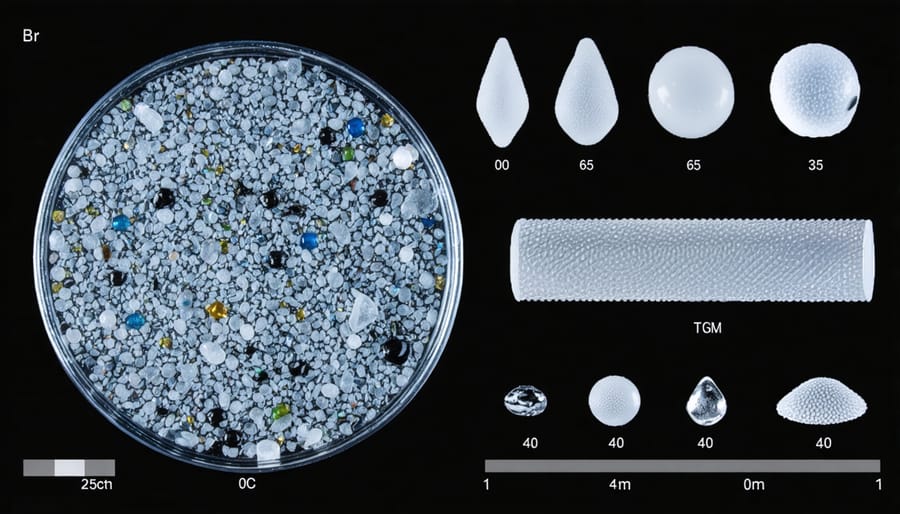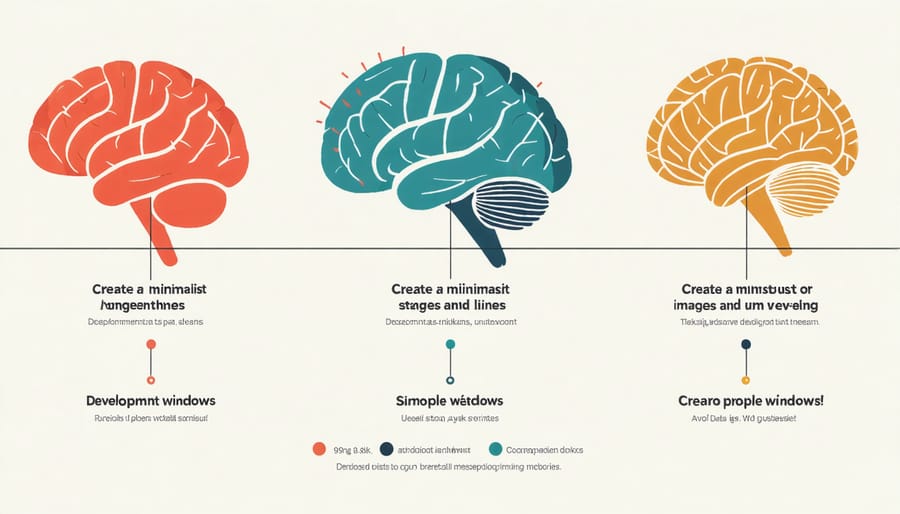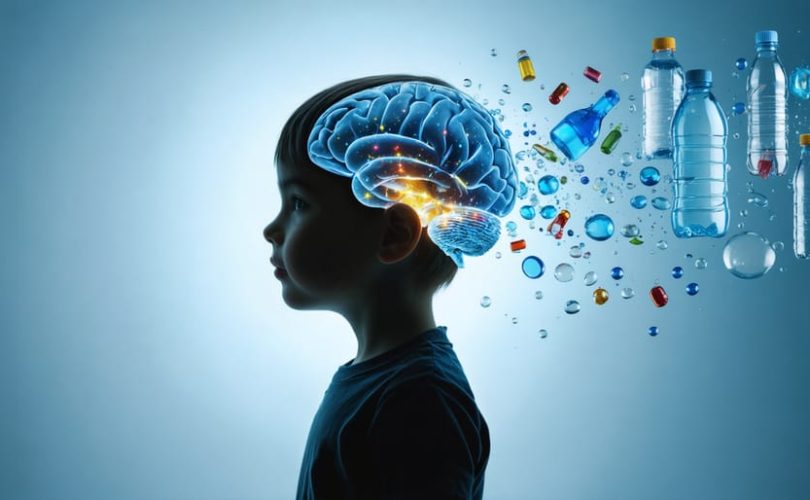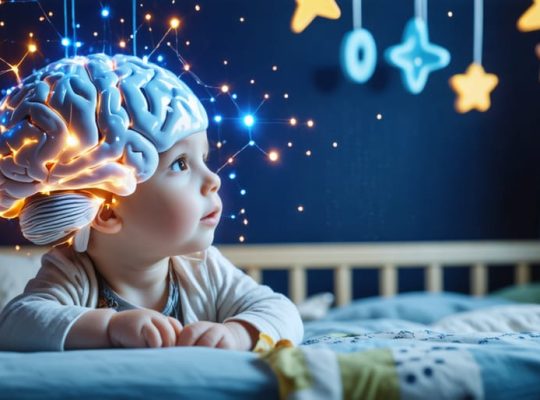Microscopic plastic particles, smaller than a grain of sand, are silently making their way into our bodies and, most concerningly, into our children’s developing brains. Recent research has revealed these tiny fragments can cross the blood-brain barrier, potentially disrupting crucial neural development and cognitive function. As parents, we’re right to be concerned – studies show the average person ingests about a credit card’s worth of plastic every week through food, water, and air.
But understanding microplastics’ impact on brain health isn’t just about acknowledging the problem – it’s about taking informed action to protect our families. While scientists continue to uncover the full scope of how these particles affect neural pathways and brain chemistry, we already know enough to make meaningful changes in our daily lives to reduce exposure.
From the bottles we drink from to the food containers we use, every choice matters when it comes to protecting our children’s developing brains. This article explores the latest research on microplastics’ neurological effects and, more importantly, offers practical steps you can take today to minimize your family’s exposure to these invisible but significant health challenges.
Let’s dive into what we know about microplastics’ journey to the brain, and most crucially, what we can do about it.
What Are Microplastics and How Do They Reach Our Children?

Common Sources in Children’s Environment
Children encounter microplastics throughout their daily environments, often through seemingly innocent sources. While parents are increasingly aware of harmful plastics in everyday items, these tiny particles can be found in surprising places. Plastic toys, especially those that show signs of wear and tear, can release microplastics during play. Baby bottles and food containers, particularly when heated or scratched, may shed microscopic particles into food and drinks.
Children’s clothing made from synthetic materials like polyester or nylon can release microfibers during washing and wearing. Even items like sippy cups, teething toys, and colorful plastic dishes can contribute to microplastic exposure. School supplies, including plastic folders, markers, and lunch containers, are additional sources children interact with daily.
Indoor environments aren’t the only concern – playground equipment, synthetic sports surfaces, and outdoor toys can also release microplastics, especially when exposed to sun and weather. Understanding these common sources helps parents make informed choices while maintaining a balanced approach to their children’s daily activities.
How Microplastics Enter the Body
Microplastics find their way into our bodies through multiple everyday routes. The most common pathway is through the food we eat and the water we drink. These tiny particles have been found in many common foods, including fish, bottled water, and even table salt. When we use plastic containers or bottles, especially when heated, microplastics can leach into our food and beverages.
We also breathe in microplastics that float in the air around us. These particles can come from synthetic clothing fibers, car tires, and the breakdown of larger plastic items. Studies have shown that indoor air often contains more microplastics than outdoor air, making this particularly relevant for families spending time at home.
Another way microplastics enter our bodies is through skin contact with certain products, like synthetic fabrics or personal care items containing microbeads.
The Developing Brain: Why Children Are More Vulnerable

Critical Periods of Brain Development
The first years of life represent crucial windows in brain development in children, making this period particularly sensitive to environmental influences, including potential exposure to microplastics. From birth through early childhood, the brain undergoes rapid growth and formation of neural connections, with specific developmental milestones occurring at different stages.
During pregnancy and the first three years of life, the brain is especially vulnerable as it forms basic structures and neural pathways. This is when children develop fundamental skills like sensory processing, language acquisition, and motor control. The blood-brain barrier, which helps protect the brain from harmful substances, is also not fully developed in young children, potentially allowing more microplastics to enter the brain tissue.
Research suggests that exposure to certain chemicals found in microplastics during these critical periods might interfere with normal brain development. For example, some plasticizers can disrupt hormones that play essential roles in brain growth and organization. While this may sound concerning, it’s important to remember that understanding these vulnerable periods helps us take appropriate precautions to protect our children’s developing brains.
Blood-Brain Barrier in Children
Children’s developing brains are particularly vulnerable to microplastic exposure due to their unique blood-brain barrier characteristics. During early development, this protective barrier isn’t fully formed, making it more permeable than in adults. Think of it as a security fence that’s still under construction – there are more gaps for unwanted substances to slip through.
Dr. Sarah Chen, a pediatric neurologist, explains: “Young children’s blood-brain barriers are naturally more permeable to allow for rapid brain development and growth. While this is essential for healthy development, it unfortunately also means that harmful substances, including microplastics, may have an easier time entering the brain tissue.”
This increased permeability continues through early childhood, gradually becoming more selective as children grow older. Research suggests that children under the age of 5 may be especially susceptible to microplastic penetration through the blood-brain barrier. This vulnerability, combined with children’s higher exposure rates through activities like crawling on floors and putting objects in their mouths, makes them a particularly sensitive population requiring extra attention and protective measures.
Understanding this vulnerability helps us take more informed steps to protect our children’s developing brains while maintaining a balanced, practical approach to everyday life.
Protecting Your Child’s Developing Brain

Smart Shopping Choices
Making informed shopping choices can significantly reduce your family’s exposure to microplastics. Start by choosing natural materials whenever possible – opt for wooden or organic cotton toys instead of plastic ones. Many manufacturers now offer safe toy alternatives made from sustainable materials that are both child-friendly and environmentally conscious.
When shopping for food storage containers, choose glass, stainless steel, or ceramic options instead of plastic. For clothing, look for natural fibers like cotton, wool, or bamboo, as synthetic fabrics can shed microplastic fibers during washing. If you need to use plastic products, check the recycling codes – avoid plastics marked with #3 (PVC), #6 (polystyrene), and #7 (mixed plastics).
Pay special attention to items that come into direct contact with food and beverages. Replace plastic water bottles with stainless steel or glass alternatives, and avoid heating food in plastic containers. When shopping for personal care products, look for items free from microbeads and packaged in glass or paper-based containers.
Remember, transitioning to safer materials doesn’t have to happen all at once. Start with the items your family uses most frequently and gradually replace others as you can.
Creating a Healthier Home Environment
Creating a healthier home environment doesn’t have to be overwhelming. Start by replacing plastic food containers with glass or stainless steel alternatives, especially for heating and storing hot foods. When shopping, choose natural fiber clothing over synthetic materials, as these shed fewer microplastic particles during washing.
Install a quality water filter that can remove microplastics from your drinking water, and consider using a vacuum with a HEPA filter to capture tiny particles from carpets and furniture. Avoid using plastic wrap and opt for beeswax wraps or silicone covers instead.
For parents of young children, choose wooden or natural fiber toys when possible, and inspect plastic toys regularly for signs of wear or damage. When cleaning, use natural cleaning products and microfiber cloths that trap particles rather than dispersing them into the air.
Simple habits like removing shoes at the door can significantly reduce the amount of microplastic-containing dust entering your home. Remember, small changes add up to make a meaningful difference in reducing your family’s exposure to microplastics.
While the presence of microplastics in our environment is concerning, there are many practical steps we can take to protect our children’s brain health. By making simple changes like using reusable containers, filtering drinking water, and choosing natural fiber clothing, we can significantly reduce microplastic exposure in our homes. Research continues to advance our understanding of these particles, and many organizations are working hard to develop better solutions for removing microplastics from our environment. Remember that every small action counts – whether it’s teaching our children about reducing plastic use or supporting policies that limit plastic production. Together, we can create a healthier future for our children while scientists develop new technologies to address this challenge. Stay informed, take positive action, and maintain hope as we work collectively toward solutions.



